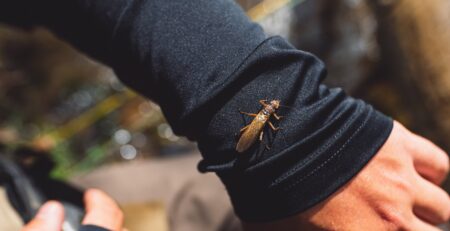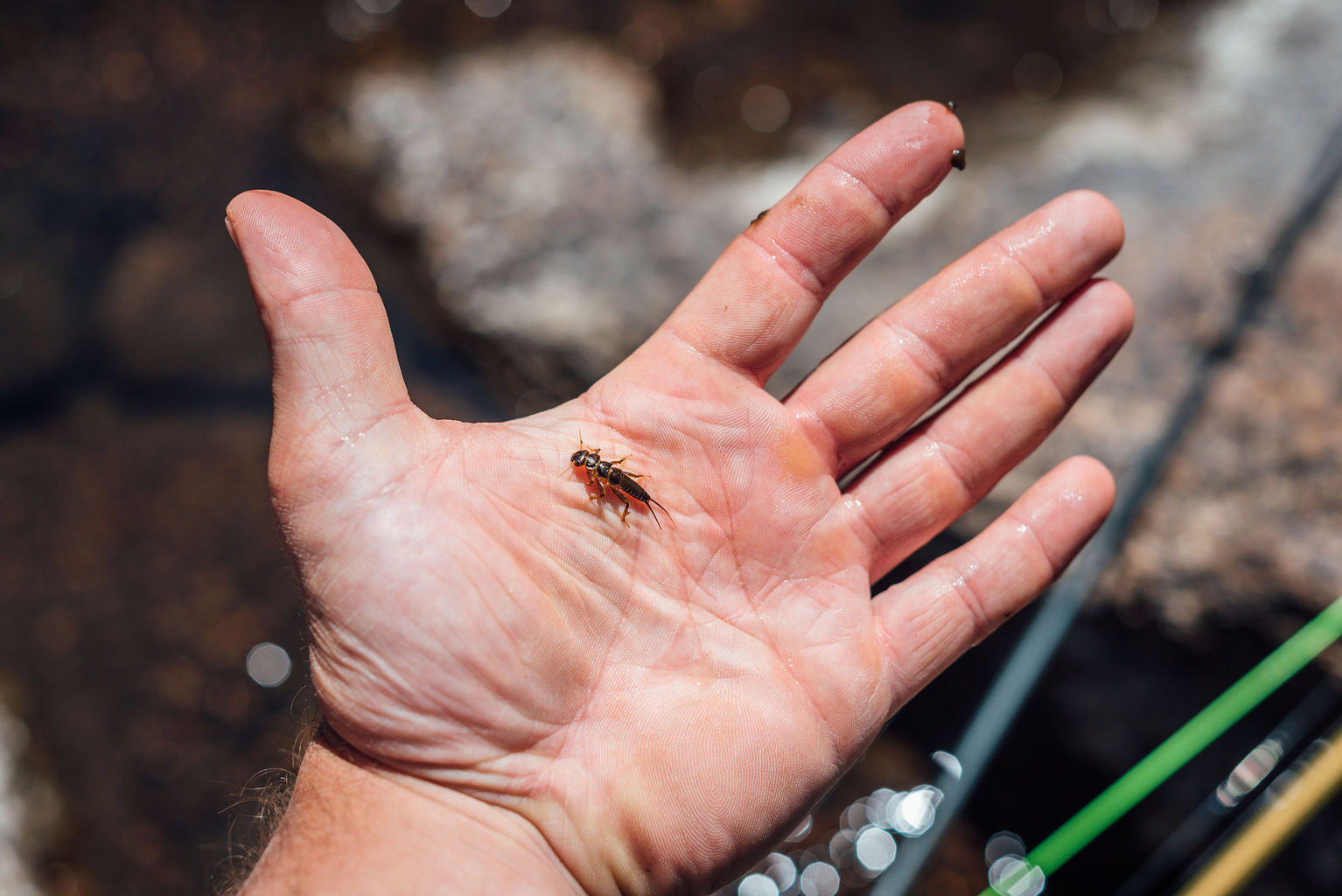How to Fish Terrestrials for Trout
Once mid-June hits, the big hatches in the Eastern U.S. are mostly done, leaving anglers looking for the next thing to keep getting their dry fly fix.
For most, the attention should then turn towards terrestrials in the form of ants, beetles, and hoppers. There is some sporadic caddis, midge, and mayfly activity on certain waters, but terrestrials will consistently produce the most fish for those wanting to fish dries. They are also the perfect flies for using dry-dropper setups and really working a bunch of water in quick order. Trout might not have the same hesitancy for a #14 hopper as they do a #20 sulphur, but there is still plenty of nuance in using these patterns and knowing how to best fish terrestrials can really help lead to some unforgettable days during summer!
Table of contents
Flies 101
When it comes to terrestrials, there are a few good options that anglers should have in their box. Hoppers (especially parachute hoppers) are a must, as are flying ants, beetles, and inchworms. These can all be carried in a variety of sizes and colors, specifically when it comes to hoppers. Many guides and veteran anglers carry them in olive, tan, brown, and yellow in a few different sizes. Bigger flies can handle larger dropper nymphs (spoiler for the next paragraph!) while smaller terrestrials are best for those bright, sunny days when spooky fish are the name of the game.
Dry-Dropper
Watching a fish come up and smash a dry is certainly exhilarating, but the truth is trout will feed subsurface a vast majority of the time. Therefore, when fishing terrestrials, there’s no reason you shouldn’t tie a nymph trailing behind a favorite hopper or flying ant pattern. You get the fun of fishing dries with the effectiveness of nymphs all in one rig! Since you’ll want to pick apart shallow spots, don’t tie the nymph too deep. Start at maybe 15 inches of tippet separating the dry from the nymph and adjust accordingly.
Hit Everything
You’ll read plenty of articles about pounding the bank, and that’s obviously a very productive method for fishing terrestrials. Hoppers, ants, and beetles crawl around in the grasses and trees along the bank and sometimes fall in, providing a protein-rich meal for trout. It, therefore, makes sense to target those areas, but don’t forget about the rest of the water! If a beetle lands in the water along the bank and isn’t gobbled up by a trout right away, it’ll get pushed down with the current which could bring it into the middle of the stream and elsewhere. It’s wise to throw a few casts in every little riffle, run, and pool that might hold a trout, because odds are pretty good that they’ve seen terrestrials before and might take a run at your fly.
Move Quick
This is a big shift away from how you’d fish during a heavy BWO or caddis hatch. If there are rising trout and bugs coming off, it’s not uncommon to spend an hour cycling through flies in an effort to get the right one and match the naturals. With terrestrials, you’re looking for those opportunistic feeders that happen to be looking up for a meal. Give each likely spot a few casts, then move on to the next one. Odds are a trout is going to let you know pretty fast whether or not they’re interested, so plan on covering as much ground as possible and by extension showing the flies to as many fish as possible. It’s a numbers game with terrestrials, and the more trout that see your offerings the greater chance you run into some looking up!
You might not encounter sections of stream boiling with hundreds of rising trout, but the action on terrestrials can be outstanding through summer. It’s a way to scratch that dry fly itch even when hatches are sparse, and the meaty flies can bring some solid fish up to the surface to investigate what we’re throwing. Picking apart every run, pocket, and pool with a hopper or flying ant is a really fun way to fish, and the constant movement and action can be addicting, and that’s all before a 16-inch brown blows up on the fly the second it hits the water!













